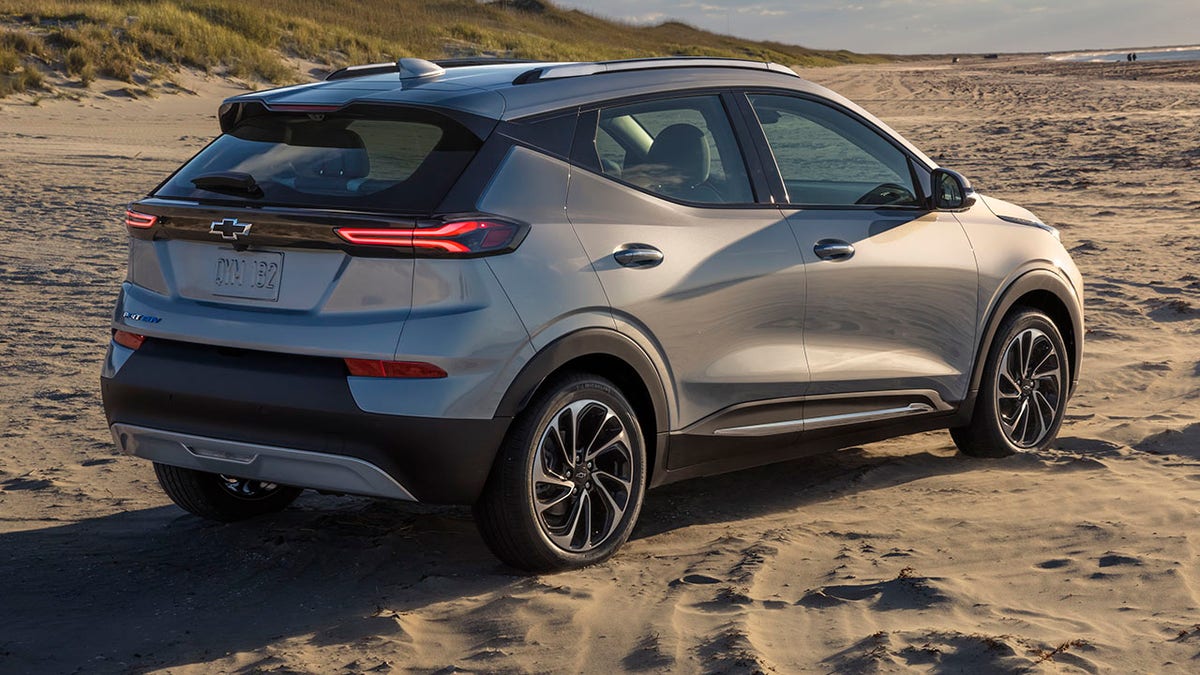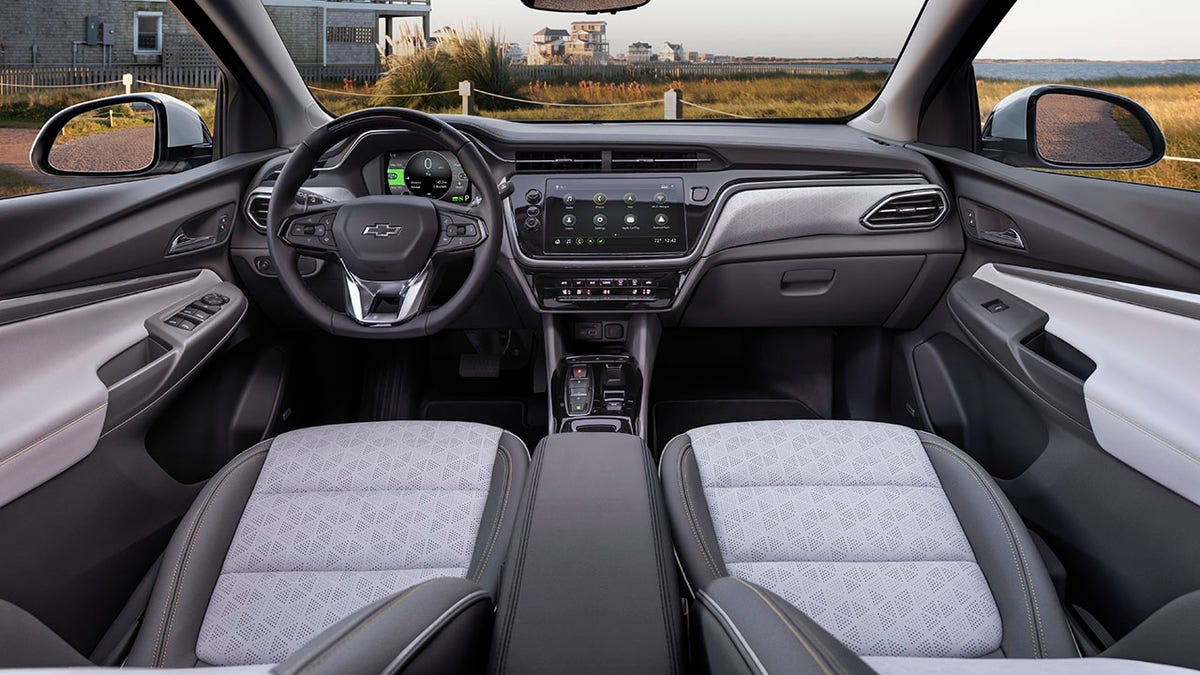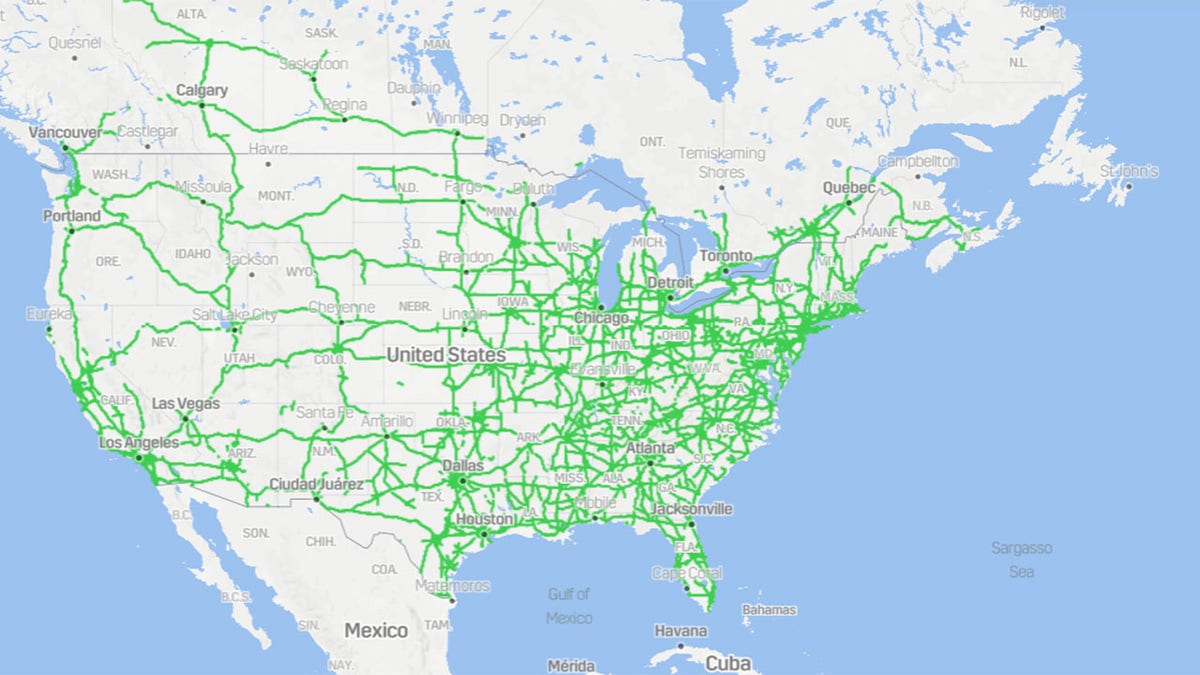Test drive: 2021 Chevrolet Bolt EUV
The electric 2021 Chevrolet Bolt EUV offers GM's hands-free Super Cruise highway driving assistang. Fox News Autos Editor Gary Gastelu lets it take him for a spin.
The Chevrolet Bolt is back for 2022 with a bigger version aimed at expanding the electric model’s audience.

(Chevrolet)
The Bolt EUV is a slightly larger take on the subcompact Bolt EV that was introduced in 2017. The "Electric Utility Vehicle" is a half-foot longer overall and has three extra inches of rear legroom than the EV, which makes a world of difference that allows it to comfortably accommodate six-foot passengers all around.

(Chevrolet)
Due to a quirk in the official measuring system, the EUV is rated with less cargo space than the EV on paper, but it can actually carry about two cubic feet more of your stuff according to Vehicle Chief Engineer Jeremy Short.

The 2022 Bolt EV starts at $31,995. (Chevrolet)
The smaller Bolt EV is still available and features a redesigned, cleaner front end that gives it a more futuristic look. At first glance, the EUV doesn’t appear to be much different, but the two don’t share any body panels and even the windshields and wiper arrangement are unique. The EUV also gets a set of roof rails to give it a little more of that SUV style.

(Chevrolet)
Aside from the extra stretch-out room, the two have identical interiors. The dashboard has been redesigned with a more conventional and upscale style than the original Bolt EV’s and has a new 10.2-inch infotainment system with a user interface that’s more like the ones used in the rest of Chevy’s lineup than the techy electric vehicle-focused system it replaces.

(Chevrolet)
A common 65-kilowatt-hour battery pack powers both Bolts through an electric motor driving the front wheels with 200 hp and 266 lb-ft of torque. It can easily chirp the tires in the Bolt EUV and has no trouble getting it going with gusto, despite its relatively hefty 3,679-pound weight. Ride comfort and handling impress compared to similarly-sized internal combustion engine vehicles, including the Chevrolet Trailblazer.
Range for the Bolt EV remains 259 miles per charge and the Bolt EUV is close behind it at 250 miles. Prices for the Bolt EV and Bolt EUV start at $31,995 and $33,595, respectively. General Motors has exhausted its allotment of federal tax credits under the current program, so they’re only eligible for state incentives for now.
Standard DC fast charging allows the Bolt EUV to replenish 95 miles worth of range in 30 minutes at a public fast-charging station, according to Chevrolet. The Bolt EUV comes standard with a home charging cable that can be used on either a 120-volt or 240-volt outlet, the latter capable of providing a full charge overnight, and Chevrolet will pay for the installation of a high-power outlet in most cases if you don’t already have one.
MORE TEST DRIVES FROM FOX NEWS AUTOS
The most significant feature difference between the two is the availability of GM’s Super Cruise highway driving system on the Bolt EUV. It allows for hands-free ‘driving’ on over 200,000 miles of roads that have been 3D-mapped as a facial recognition system keeps an eye on the driver to make sure they are keeping their eyes on the road, just in case.

(GM)
Super Cruise uses a camera, radar and very accurate GPS tracking to center the Bolt EUV within a lane and control its speed. It only operates on stretches of road that it knows that it can handle and gives plenty of notice via an LED strip on the steering wheel and a loud voice command when it’s approaching a deactivation zone and needs the driver to take over. It will also do that if it detects a disparity with the map data, which was created with Lidar scans, or other present danger.
It’s very effective, even on deteriorated surfaces with faint lane markers, and just a slight look away from the road for more than a few seconds will initiate the deactivation process. If the driver fails to respond, the car will eventually turn on the hazards, bring itself to a controlled stop and automatically call for help.
Super Cruise is similar to Tesla’s Autopilot in operation, but Tesla’s system technically requires the driver to always have a hand on the wheel, while GM is the first and currently only automaker advertising hands-free operation. That said, I wouldn’t advise drinking hot tea from a cup and saucer behind the wheel.
MORE: SUPER CRUISE BEATS AUTOPILOT IN CONSUMER REPORTS TEST
The caveat is that Super Cruise is a $2,200 option that requires choosing the Bolt EUV’s top Premier trim level, which starts at $38,495. It’s also limited to the lane-keeping feature, unlike the version that’s available in the Cadillac Escalade, which can change lanes at a tap of the turn signal stalk, negotiate highway interchanges and can be updated with additional functionality as it becomes available.
Even without it, the Bolt EUV is an attractive option in an increasingly crowded segment of small utility vehicles that can go 250 or more miles per charge, which includes the similarly-sized Hyundai Kona EV and larger Volkswagen ID.4 that cost a bit less with the tax credits they qualify for factored in.
Full pricing for the Bolt EUV lineup will be released closer to when it hits showrooms this summer, but a limited fully-loaded Launch Edition model with Super Cruise and a panoramic glass roof is available for order now at $43,495.
